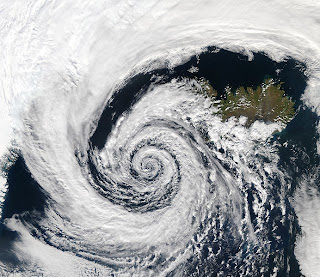Q: On a recent Scout hike, a heated debate developed during our woodly wanderings. Proudly standing on one side was a 12 year old insisting that grass did not exist during the era of the dinosaurs, and didn' t appear until after the great meteorite that brought mass extinction. On the other were several boys and leaders insisting that common sense pointed to the fact that grass did exist. There is honor, a little money and participation in future Scouting events riding on this. So. Did grass exist at the time of the dinosaurs?
The Vegan Raptor
A: Dear Poaceaen Minded,
It sounds like your adolescent dinophile is fairly caught up on the early eras of the earth and the development of land animals and plants. Or fairly so. You may not like the answer, but technically the 12 year old is right, and wrong. (What a safe cop-out). And until 2005 or so, he was mostly correct. Let's explain.
Grasses - specifically of the poaceaen or gramineae family - are a branch of flowering plants, even part of a greater group of monocotelydons (single seed leaf) that include pineapples, palms, orchids and lilies. We know grasses as things that produce food we eat - ryes, wheat, etc - and things we decorate with, i.e the lawn. The family includes bamboo, rice, and corn, and includes 9-10,000 species.
But this plant family that dominates our lives and cuisine, is relatively new. Lets describe the history briefly, as understood up through 2004, best summarized by Elizabeth Kellogg. Using rDNA studies of the chloropast genome (a sub-cell structure in plants) scientists can begin to create a family tree of grasses to show their development. You have to go pretty far back to find a common ancestor of rice and corn (maize). Scientists also use fossil evidence in conjunction with atomic dating to start fixing the early descendants. Specifically they look at pollen fossils and for specific grass features (look for channels that go through the outer but not inner pollen walls). Earliest examples are found at 60-55 million years ago. They have found some examples of pollen from 70 million years ago, but they cannot confirm it actually comes from grass.
Continue Reading...
The Vegan Raptor
A: Dear Poaceaen Minded,
It sounds like your adolescent dinophile is fairly caught up on the early eras of the earth and the development of land animals and plants. Or fairly so. You may not like the answer, but technically the 12 year old is right, and wrong. (What a safe cop-out). And until 2005 or so, he was mostly correct. Let's explain.
Grasses - specifically of the poaceaen or gramineae family - are a branch of flowering plants, even part of a greater group of monocotelydons (single seed leaf) that include pineapples, palms, orchids and lilies. We know grasses as things that produce food we eat - ryes, wheat, etc - and things we decorate with, i.e the lawn. The family includes bamboo, rice, and corn, and includes 9-10,000 species.
But this plant family that dominates our lives and cuisine, is relatively new. Lets describe the history briefly, as understood up through 2004, best summarized by Elizabeth Kellogg. Using rDNA studies of the chloropast genome (a sub-cell structure in plants) scientists can begin to create a family tree of grasses to show their development. You have to go pretty far back to find a common ancestor of rice and corn (maize). Scientists also use fossil evidence in conjunction with atomic dating to start fixing the early descendants. Specifically they look at pollen fossils and for specific grass features (look for channels that go through the outer but not inner pollen walls). Earliest examples are found at 60-55 million years ago. They have found some examples of pollen from 70 million years ago, but they cannot confirm it actually comes from grass.
Your brief dinosaur history: Dinosaurs were the dominant land vertabrates from the late Triassic to late Cretaceous period - roughly 230-65.5 million years ago. Science generally points to several mass extinction events taking place at the end of hte Cretaceous period to kill off the dinosaurs and allow mammels to dominate. This later time is a time of thriving for dinosaurs, including the Tyrannosaur. And some mammels were around at this time. But you can see that with dinosaurs dying off in 65.5 million years from asteroids and/or volcanos, grass wasn't around according to the fossil and genetic record. So before 2004 scientists declared, "Dinosaurs did not eat grasses".
But dinosaur poop saves the day! (Didn't expect that ever!) In 2005, a Science article discussed that they have found evidence of grasses in corprolites (the polite word for fossilized poop). Specifically they found that 5 different taxas (major species groups) of grasses were eaten by dinosaurs. (In this case titanosaur suaropods in India) This points to the fact that grasses were somewhat widespread and developed before the catastrophes of 65.5 million years ago.
 |
| A type of titanosaur sauropod |
So...both sides are right. (Keep in mind the the exact dating and science here is a bit nebulous and often dependent on what we are lucky enough to find in someone's backyard). Grasses did exist to a good extent during the time of the dinosaurs, but not for the majority of the time. So Fred Flinstone didn't have to mow the lawn. How you settle the bet is up to you.
 |
| A TV lie! He may have had the hammock, but not the lawn. |
HRB


 Today 125-150 books are being digitized a day because of RECAPTCHA. Even the New York Times archive are being transcribed this way. 130 years of newspaper archive is being transcribed from
Today 125-150 books are being digitized a day because of RECAPTCHA. Even the New York Times archive are being transcribed this way. 130 years of newspaper archive is being transcribed from 








